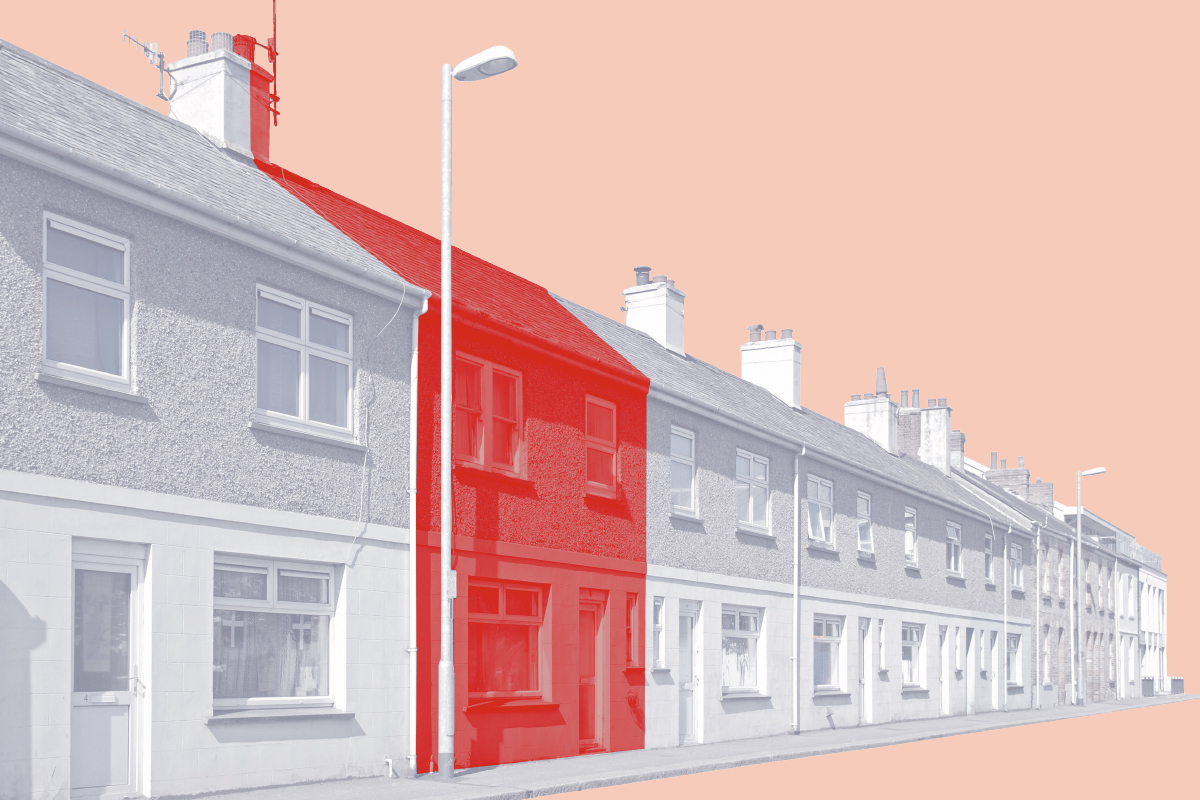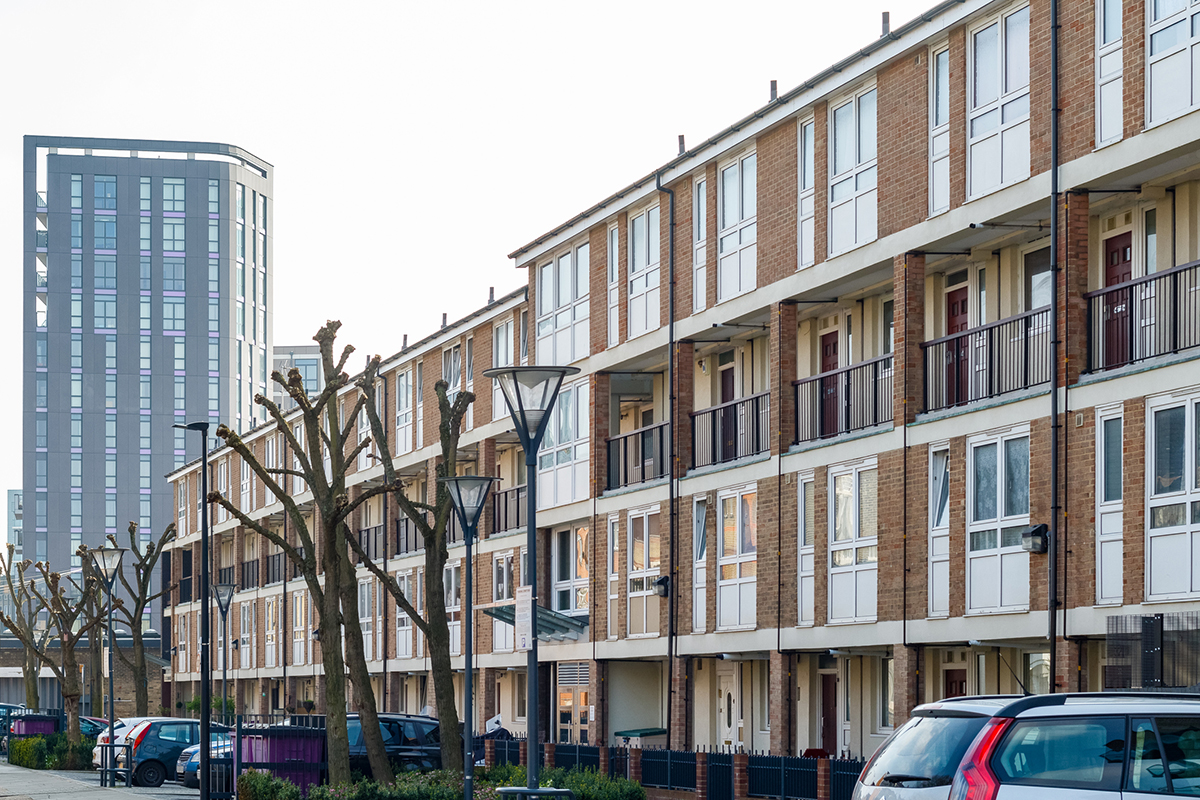Revealed: the scale of ex-RTB home conversions to private rent
In 2015, Inside Housing revealed that 37.6% of former Right to Buy homes were being rented privately. Two years later, Nathaniel Barker finds the number creeping up. Photography by Alamy
In 1979 when minister for the environment Michael Heseltine introduced the legislation which would eventually become the Right to Buy, he said it would be “one of the most important social
revolutions of this century”.
He was not wrong. Since then around 1.5 million homes have been sold under the scheme, altering the picture of council housing in this country forever.
But in August 2015, Inside Housing research revealed another side to the story of the famous Thatcherite policy.
It showed that 37.6% of ex-council homes sold under the Right to Buy were not occupied by the happy homeowners the Conservatives had intended. Instead, they were now part of the private rented sector (PRS) – owned by a range of former council tenants, buy-to-let investors and letting companies, and let at often exorbitant rents.
This has both driven and reflected changes in the housing market as a whole during this time. When the Right to Buy was first implemented, the PRS made up around 12% of total housing in England, according to government statistics. Today, 20% of households rent from private landlords. The proportion of people in social rent housing has plunged from 31.4% to 17.2%.
No sincere discussion of council-owned housing is therefore complete without consideration of the Right to Buy. Yet, despite the apparent focus on social housing following Grenfell, the English government has said little on the policy. A second pilot of the long-promised and controversial extension for housing association tenants was confirmed in the Autumn Budget, but otherwise it has been absent from the debate – despite extensive campaigning from the Local Government Association and others for reforms.
As the government works on its Social Housing Green Paper, Inside Housing thought it was time to revisit the phenomenon of ‘Right to Buy to let’.
Freedom of Information Act requests have procured figures from 111 councils for the number of leasehold properties sold under the Right to Buy for which the leaseholder has a separate address.
Subletting of Right to Buy Homes in England
| Local authority | Leaseholds sold under RTB | Registered with away address | RTB homes sub-let since 2012 | % of homes sub-let | |
| Milton Keynes UA | 1609 | 1140 | 11 | 70.85% | |
| Bolsover | 116 | 75 | 64.66% | ||
| Brighton & Hove UA | 2871 | 1556 | 414 | 54.20% | |
| Canterbury | 354 | 190 | 4 | 53.67% | |
| Cheshire West & Chester | 317 | 170 | 3 | 53.63% | |
| Stevenage | 1408 | 751 | 122 | 53.34% | |
| Nuneaton & Bedworth | 448 | 233 | 52.01% | ||
| Norwich | 2964 | 1436 | 50 | 48.45% | |
| Winchester | 371 | 178 | 8 | 47.98% | |
| Eastleigh | 34 | 16 | 0 | 47.06% | |
| Kingston upton Thames | 1515 | 711 | 19 | 46.93% | |
| Ipswich | 371 | 174 | 6 | 46.90% | |
| Newham | 7125 | 3324 | 120 | 46.65% | |
| Stoke-on-Trent UA | 374 | 174 | 7 | 46.52% | |
| Blackpool UA | 395 | 183 | 46.33% | ||
| Dacorum | 1779 | 824 | 46.32% | ||
| Welwyn Hatfield | 1282 | 592 | 196 | 46.18% | |
| Southampton UA | 1923 | 886 | 46.07% | ||
| Northampton | 881 | 405 | 8 | 45.97% | |
| Harlow | 2499 | 1144 | 13 | 45.78% | |
| Ashfield | 194 | 88 | 30 | 45.36% | |
| Chesterfield | 240 | 108 | 12 | 45.00% | |
| Oadby & Wigston | 69 | 31 | 0 | 44.93% | |
| Mansfield | 273 | 122 | 19 | 44.69% | |
| Barrow-in-Furness | 213 | 95 | 2 | 44.60% | |
| Ealing | 4716 | 2099 | 41 | 44.51% | |
| Sedgemoor | 113 | 50 | 8 | 44.25% | |
| Lewes | 263 | 116 | 19 | 44.11% | |
| Bassetlaw | 168 | 74 | 44.05% | ||
| Ashford | 266 | 117 | 6 | 43.98% | |
| Redbridge | 2474 | 1086 | 33 | 43.90% | |
| Lincoln | 319 | 139 | 3 | 43.57% | |
| Cambridge | 1162 | 506 | 43.55% | ||
| York UA | 527 | 229 | 17 | 43.45% | |
| Portsmouth UA | 2007 | 867 | 22 | 43.20% | |
| Cannock Chase | 272 | 117 | 2 | 43.01% | |
| Gravesham | 434 | 186 | 44 | 42.86% | |
| Tendring | 402 | 172 | 2 | 42.79% | |
| Barking & Dagenham | 3495 | 1488 | 413 | 42.58% | |
| Wandsworth | 15970 | 6752 | 28 | 42.28% | |
| Exeter | 1006 | 425 | 22 | 42.25% | |
| Newcastle upon Tyne | 1700 | 717 | 31 | 42.18% | |
| Swindon UA | 496 | 209 | 42.14% | ||
| Camden | 8378 | 3530 | 39 | 42.13% | |
| Eastbourne | 667 | 280 | 26 | 42.98% | |
| Islington | 8059 | 3378 | 93 | 41.92% | |
| Oxford | 678 | 282 | 4 | 41.59% | |
| Hillingdon | 3266 | 1355 | 34 | 41.49% | |
| Southend of Sea UA | 612 | 253 | 7 | 41.34% | |
| Birmingham | 5081 | 2087 | 41.07% | ||
| Warwick | 591 | 241 | 3 | 40.78% | |
| City of London | 932 | 380 | 5 | 40.77% | |
| Wolverhampton | 2232 | 905 | 291 | 40.55% | |
| Runnymede | 150 | 60 | 0 | 40.00% | |
| Sheffield | 2488 | 995 | 46 | 39.99% | |
| Hammersmith & Fulham | 4710 | 1883 | 39.98 | ||
| Poole UA | 582 | 232 | 58 | 39.86% | |
| Waveney | 113 | 45 | 6 | 39.82% | |
| Epping Forest | 1047 | 414 | 138 | 39.54% | |
| Crawley | 1609 | 631 | 39.22% | ||
| Kirklees | 1006 | 394 | 9 | 39.17% | |
| East Riding of Yorkshire | 228 | 89 | 3 | 39.04% | |
| Colchester | 1054 | 411 | 58 | 38.99% | |
| Haringey | 4969 | 1925 | 60 | 38.74% | |
| Southwark | 12539 | 4857 | 38.74% | ||
| Northumberland | 257 | 99 | 0 | 38.52% | |
| Havering | 2503 | 963 | 34 | 38.47% | |
| Cheltenham | 477 | 183 | 5 | 38.36% | |
| Rotherham | 534 | 202 | 13 | 37.83% | |
| Waltham Forest | 2123 | 802 | 42 | 37.78% | |
| Westminster | 8988 | 3363 | 37.42% | ||
| Tamworth | 420 | 157 | 2 | 37.38% | |
| Adur | 511 | 190 | 7 | 37.18% | |
| Gateshead | 887 | 327 | 6 | 36.87% | |
| Dover | 459 | 169 | 36.82% | ||
| South Tyneside | 765 | 280 | 8 | 36.60% | |
| Dartford | 456 | 166 | 9 | 36.40% | |
| South Cambridgeshire | 123 | 43 | 13 | 34.96% | |
| Broxtowe | 281 | 98 | 0 | 34.88% | |
| Scarborough | 66 | 23 | 0 | 34.85% | |
| Woking | 406 | 141 | 34.73% | ||
| Bournemouth UA | 517 | 179 | 58 | 34.62% | |
| Kingston upon Hull UA | 468 | 162 | 34.62% | ||
| Hounslow | 3026 | 1038 | 34.30% | ||
| Lambeth | 9479 | 3235 | 47 | 34.13% | |
| West Lancashire | 415 | 141 | 33 | 33.98% | |
| Doncaster | 260 | 88 | 21 | 33.85% | |
| Greenwich | 4736 | 1602 | 72 | 33.83% | |
| Guildford | 512 | 173 | 12 | 33.79% | |
| Lewisham | 557 | 188 | 33.75% | ||
| Stroud | 163 | 55 | 1 | 33.74% | |
| Melton | 30 | 10 | 1 | 33.33% | |
| Kettering | 261 | 86 | 1 | 32.95% | |
| North East Derbyshire | 80 | 26 | 11 | 32.50% | |
| Rugby | 62 | 20 | 0 | 32.26% | |
| Fareham | 456 | 141 | 0 | 30.92% | |
| Oldham | 13 | 4 | 0 | 30.77% | |
| Mid Suffolk | 40 | 12 | 1 | 30.00% | |
| Wealden | 197 | 57 | 4 | 28.93% | |
| Harrogate | 195 | 56 | 2 | 28.72% | |
| Darlington UA | 77 | 22 | 28.57% | ||
| Wokingham UA | 187 | 51 | 27.27% | ||
| Sutton | 1502 | 400 | 12 | 26.63% | |
| New Forest | 132 | 35 | 10 | 26.52% | |
| Barnsley | 363 | 94 | 1 | 25.90% | |
| Tower Hamlets | 9538 | 2541 | 82 | 26.64% | |
| South Holland | 71 | 17 | 1 | 23.94% | |
| East Devon | 184 | 41 | 13 | 22.28% | |
| Central Bedfordshire | 345 | 72 | 12 | 20.87% | |
| Tandridge | 629 | 107 | 36 | 17.01% | |
| Babergh | 103 | 13 | 1 | 12.62% | |
| TOTALS | 180260 | 72454 | 3186 | 40.19% |
Source: Freedom of Information Act reponses from local authorities
This method does have its shortcomings: it does not count houses where a freehold is sold and it may include a handful of properties that have been gifted to a family member. But it is the only way to estimate how much former council stock is being rented privately, and many authorities use it to gauge levels of subletting.
The authorities which returned responses have recorded a combined total of 180,260 leasehold Right to Buy sales. Of these, 72,454 are thought to be sublet.
That is 40.2% – 2.6 percentage points higher than shown in our previous survey of 91 councils in 2015 and a 7% rise overall.
When compared with the 62 authorities which returned data for both requests, there is a 2.5 percentage point rise up to 41.1% – an increase of 6.4%.
While this growth is marginal, it is enough to spark concern.
Eamon McGoldrick, managing director of the National Federation of ALMOs, suggests actual levels of subletting could be significantly higher than is suggested by the data.
“Leaseholders are allowed to sublet but some of them don’t actually inform the council that they’re doing it, possibly because they think it will be an issue,” he says. “So there will be another number on top of this figure that haven’t given the freeholder an away address. You can probably add at least another 5% onto the levels we know about.”
Milton Keynes remains the Right to Buy to let capital, with 70.9% of its leaseholds in the PRS, up from 69.6% in 2015.
And some councils have seen significant increases in levels of subletting in the past year or so. Redbridge in east London stands out, with the proportion of its ex-council flats being let by private landlords rising from 24.5% to 43.9%. The number of leaseholders in the borough with an away address has almost doubled from 590 in August 2015 to 1,086. The council did not respond to a request for comment.
But other councils have seen the reverse: Stevenage and Blackpool had the second and third-highest levels of Right to Buy subletting according to the previous survey. While they returned figures before of 65.4% and 65.2%, current rates are 53.3% and 46.3% respectively.
Stevenage Borough Council says it does not have a buy-back scheme or another policy to claw back homes from the PRS and that it was difficult to know what is behind the drop. It suggests that more leaseholders may have informed the council that they were subletting in 2015. Private landlords electing to sell their former council homes would also contribute.
It is hard to overstate the negative consequences of this move for social housing policy. Council rents are on average £88 per week in England, while private rents are £210. In London, this gap grows from £108 a week to £359 for private rents.
Subletting of Right to Buy Homes in Wales
| Local authority | Leaseholds sold under RTB | Registered with away address | RTB homes sub-let since 2012 | % of homes sub-let |
| Swansea | 637 | 328 | 2 | 51.49% |
| Pembrokeshire | 318 | 137 | 4 | 43.08% |
| Carmarthenshire | 229 | 98 | 42.79% | |
| Cardiff | 1201 | 477 | 4 | 39.72% |
| Powys | 110 | 42 | 1 | 38.18% |
| Flintshire | 82 | 31 | 0 | 37.80% |
| Vale of Glamorgan | 300 | 108 | 36.00% | |
| Denbighshire | 41 | 14 | 0 | 34.15% |
| TOTALS | 2918 | 1235 | 12 | 42.32% |
Source: Freedom of Information Act reponses from local authorities
With the stock of social housing eroding, homeless families are increasingly housed in the private rented sector and more than £9bn each year is paid to private landlords in housing benefit. As council housing increasingly becomes private rented housing, the taxpayer suffers and those in need of a secure home suffer while a small number of companies and landlords gain – with the property originally sold off at a loss to the state.
“This is definitely the unintended consequence of the policy,” admits Eddie Hughes, Conservative MP for Walsall North and chair of Walsall Housing Group – one of the housing associations which may be involved in the pilot of the extension next year – though he insists he endorses the Right to Buy. “Perhaps we need to encourage people to do more to show the benefit of holding onto the property and say, ‘instead of making a quick profit think about the long-term benefit to you and your family of holding onto that home’.”
But in many places, it seems the incentive to make a quick profit is still winning. Which may not be exactly the type of social revolution envisaged by Mr Heseltine all those years ago.
Inside Housing Spotlight
Inside Housing Spotlight is a series of pieces showcasing the best of our investigative and data journalism.
Spotlight pieces:
14 December 2018: Starting to bite - how Universal Credit is making people homeless: we reveal new figures showing a clear link between Universal Credit and homelessness
9 November 2018: First Priority - the inside story of a housing association which almost went bust When a small supported housing provider entered into a series of leasing deals with investment funds, it nearly spelled disaster for its vulnerable tenants. We investigate why.
12 October 2018: The ballad of Knowsley Housing Trust the inside story of the first housing association made non-compliant by the sector's watchdog for fire safety issues
13 September 2018: How tweaked building guidance led to combustible insulation on high rises: an investigation shows how lobbyists from the plastic insulation industry supported a quiet tweak to building guidance to permit combustible insulation on tall buildings
31 August 2018: The true cost of homelessness Freedom of Information requests reveal the soaring costs of temporary accommodation
30 August 2018: The forgotten threat to high rise tenants We investigate the threat posed by combustible window panels on social housing high rises
13 June 2018: The Biggest Ever Survey of Fire Risk Assessments Data journalism revealing widespread fire safety issues in more than 1,500 tower blocks across the country
12 April 2018: A Section 106 Story An investigation into allegations of "sham transactions" involving Section 106 deals in south London
23 March 2018: The Paper Trail: The Failure of Building Regulations A lengthy investigation into the failures of building regulation that may have contributed to the Grenfell Tower disaster, and the many missed warnings
23 February 2018: The Kingspan Papers Leaked meeting notes reveal some worrying issues, including allegations of fire safety report doctoring by manufacturers
9 February 2018: Gentoo: a Sunderland story We look back at the recent history of Sunderland’s largest housing association.
25 January 2018: Homeless families face long stays in council-owned hostels we reveal how councils in London are skirting the law by using hostels to house people in temporary accommodation for more than six weeks
7 December 2017: Council house to private rent We reveal the percentage of former Right to Buy homes in the private rented sector has passed 40%
17 November 2017: Rent to buy, or rent to rent? A look at how successful the government's Rent to Buy schemes have been
7 September 2017: Once upon a time in the west The history of KCTMO in the years before the Grenfell Tower fire
11 August: 2017 Grenfell: The paper trail - our news editor Pete Apps examines seven years of council documents to tell a story of the missed opportunites to prevent the Grenfell tragedy
4 August 2017 : Knowing the risks – the most common fire safety problems in tower blocks
26 May 2017: Rents hiked for RTB replacements – Sophie Barnes reveals less than half of Right to Buy replacement homes are for social rent
12 May 2017: A stark warning – a prescient piece looking at lessons to be learned from the Shepherds Bush tower block fire
13 April 2017: Where the axe will fall – a look at plans to axe housing benefit for younger people
10 Feb 2017: Circle of Despair – the inside story of Circle's repairs and maintenance troubles
3 Feb 2017: The Benefit Cap Tightrope – Sophie Barnes unveils the first exclusive analysis of the lower benefit cap














